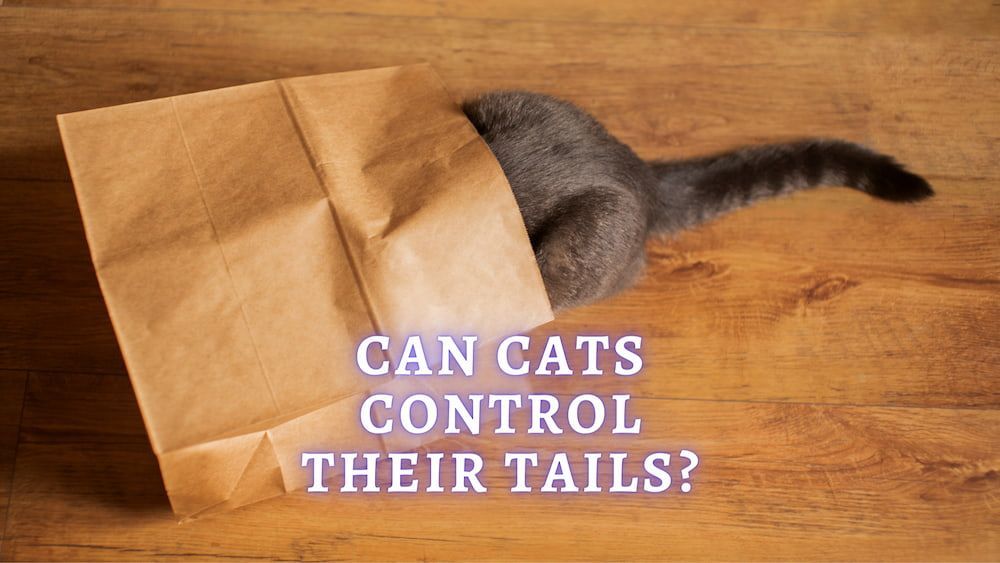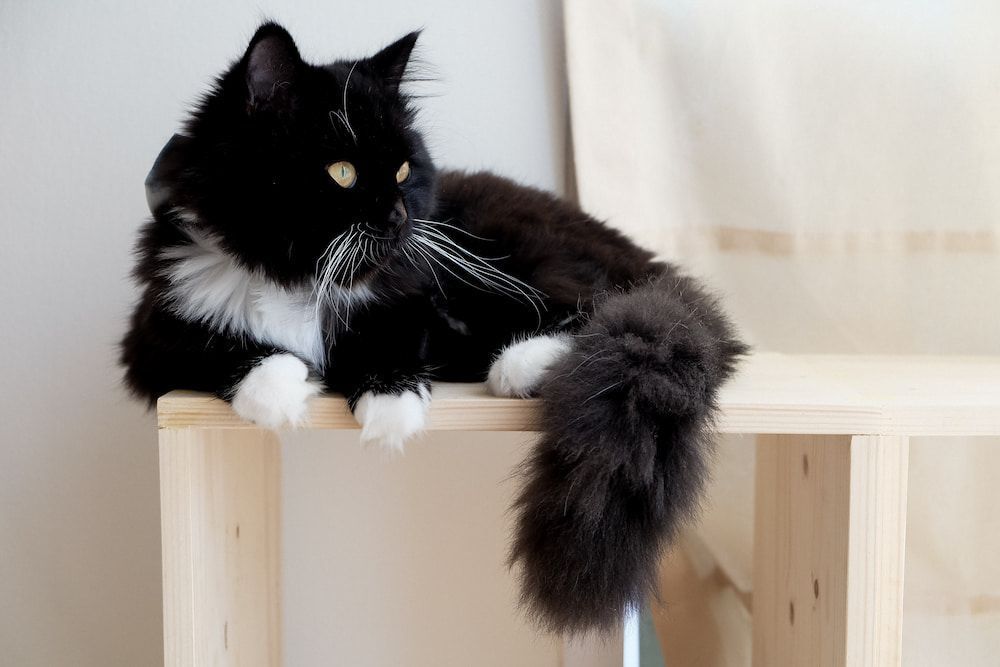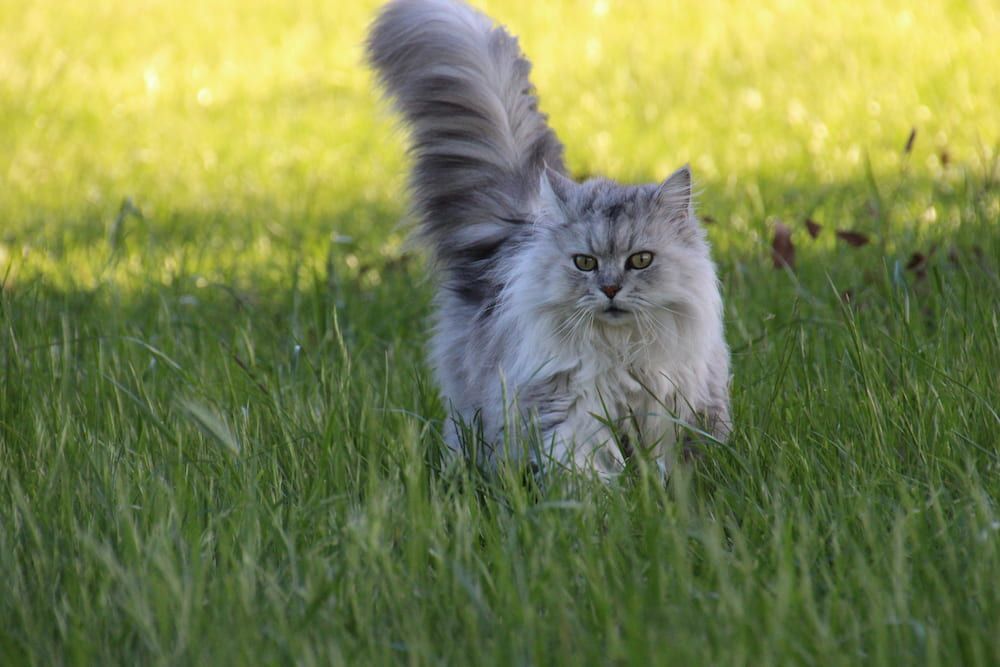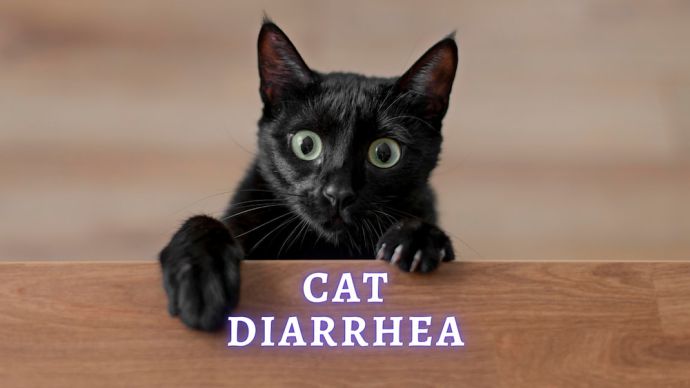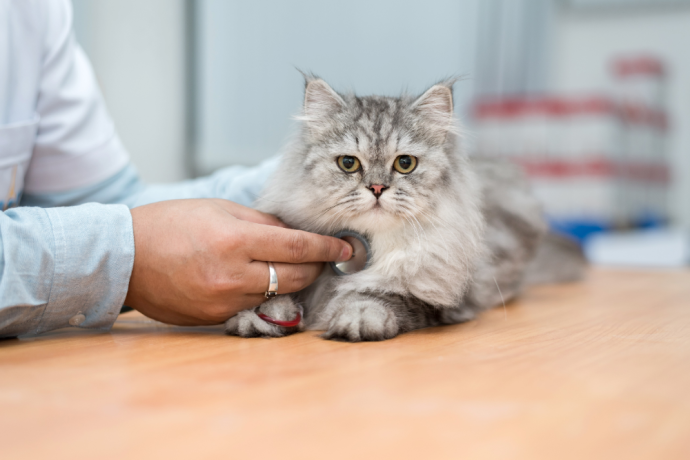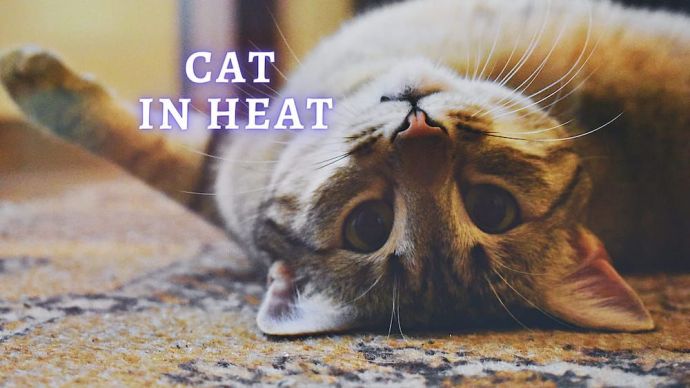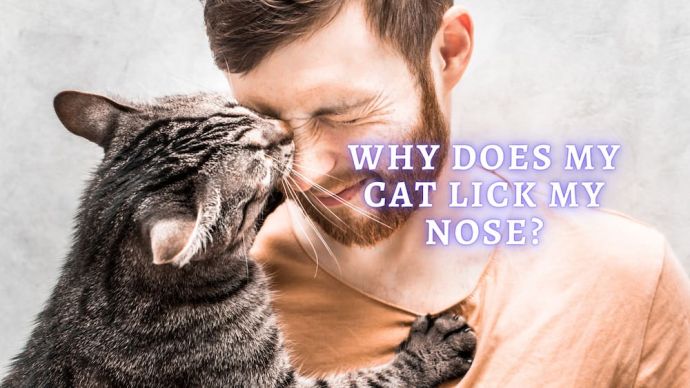Can Cats Control Their Tails? How Much Control Do Cats Have Over Their Tails?
Written by:
Author: Scott Jeffrey
Scott is a professional blogger with 12+ years of experience in writing, and holds an MA in anthropology. He has two cats as housemates. Also, Scott is passionate to research on pet-related topics such as dog training, puppy feeding, and cat health.
View all 63 articlesLearn about our editorial process and veterinary review board.
Viewed: 113
Updated on: 04/24/2023
Many owners have a common question: whether or not their feline friend can actually control their tail. After all, cats are known for their acrobatic abilities and often use this as another appendage.
We may love to watch our pets play with their tails and need clarification about the nature of the body language they present with it. In this article, we will look closely into whether cats can control their tails.
Do Cats Control their tails?
Cats can control it and move them in different directions at will. The tail is not just an extension of the spine but comprises around 19-23 separate vertebrae connected by muscles, and this gives pets great control over how they move and position.
While it may seem like your pet has complete control, it is essential to remember that some of your pet’s movements with the tail are involuntary. Just like we often twitch or move in our sleep, sometimes cats twitch when asleep or lost in thought.
How we move and focus our eyes is a great comparison to tail movements. We can often focus and use our eyes to see better or to detect essential items in our field of vision, but sometimes when we are tired, our eyes twitch and move involuntarily. We also blink and maintain our eyes without a second thought. It can control it when it focuses, but it may also perform automatic functions on instinct or reaction.
READ MORE: Cat Breeds with No Tail
How much control do cats have over their tails?
Cats have fair control of movement as it extends their spine, and they can move it for balance, communication, or involuntary reactions. Most of the time, when your pet is using it in a movement, they are likely to be fully aware of it, such as balancing on a high shelf or twitching it while stalking prey. The speed and movement of a tail swing will often indicate the emotions your pet feels.
How to understand your cat’s tail?
Now that we know more about communication, it is essential to recognize what the movements and various positions can also mean. The position can often indicate its emotional state, and the amount of control your pet has over its tail. It can be more difficult for your pet to control when they are emotional or in a new environment.
Tail positions:
- A low and relaxed position often indicates that your pet feels content and comfortable.
- High and uprightness often mean that your pet feels alert, confident, or aggressive.
- A quivering straight-out can often signal that your pet is feeling scared or even threatened. Seeing your cat with the hair up on its back can mean that they are showing more aggressive or angry behaviors.
- A tightly wrapped around the body often means that your pet is feeling cold, stressed, or ill.
- A curved with ears forward often means your pet is content and happy.
- Additionally, how your pet moves their can give clues about its feelings.
Tail movements:
- A slow movement or twitch of the tail can often show that your pet feels calm or relaxed. Different cat tail movements that are slow indicate a calm cat’s body language.
- A fast movement or twitch often indicates that your pet feels agitated, excited, or threatened. This can be a cat tail language that conveys a hunting mechanism in your cat.
- If your pet is moving her tail back and forth with her ears back, this could be an indication they are frustrated and angry.
- A flicking could indicate that they are feeling feisty or ready to pounce. If you are playing with your pet and you notice this behavior, it could mean that it might attack your hand or arm. Cat owners may recognize the thrashing movements from times they have played with their pet.
- A swishing from side to side often means that your pet is feeling agitated or even threatened. If you see this movement, it might be an indication that your pet is getting ready to fight or flee. It can also be an involuntary tail movement when your pet has just woken up.
Pets have a lot of control over their tails, and their position and movement can indicate how your pet feels. If you are ever concerned about your pet’s tail movement or position, it is always best to give them some space and observe their behavior. It is always best to consult your veterinarian if you have any concerns.
RELATED: How to tell if a Cat is in Pain? (Veterinary Advice)
Why does my cat slap me with his tail?
Your pet will likely slap you with its tail when seeking attention. If you have been petting your pet and they start swapping at you with it, they are likely trying to communicate that they want you to stop. If your pet continues to strike at you after you have stopped petting them, it could be an indication that they are feeling irritated or even angry. If this behavior concerns you, it is always best to keep observing their behaviors to see if they could be hurt or in danger.
How can I tell if my cat’s tail is hurt?
If you notice that your pet is holding their tail differently or they are not using its as much as usual, this could be an indication that its tail is hurt. If your pet is winning or being extra vocal, this could also be a sign that they are in pain. If your pet’s tail is limp or they are dragging it, this is another sign that something might be wrong. It is always best to take your pet to the veterinarian if you have concerns about overall health.
What are some common tail injuries in cats?
There are a few different types of injuries. One common injury is “chasing,” which can happen when your pet gets caught in a door or window. This injury can cause bruising, swelling, and even broken bones. Another common injury is called “tip injury,” which can be caused by biting, chewing, or even stepping. Tip injuries can cause pain, bleeding, and even infection. If you notice any of these signs in your pet, it is always best to get them medical help as soon as possible.
How can I prevent my cat from injuring its tail?
You can do a few things to help prevent your pet from injuring. One thing you can do is make sure that there are no objects around your home that they could potentially get their tail caught in. Another thing you can do is create a safe environment for them to play in where they can’t injure themselves. You can also train your pet not to bite or chew. Suppose you are concerned about your pet regularly biting its tail or injuring it. In that case, you may consider training new behaviors or using bitter apple or other sprays to dissuade them from chewing on their tail.
READ MORE: Why Does My Cat Grab My Hand and Bite Me? (Vet Approved Article)
Do cats know their tail is their own?
Cats can tell that their tail is their own, and they have a lot of control over it. They use their tails for balance, communication, and even self-defense. Even if they are close to other cats, they can still tell that their tail is their own. Most of the time, a pet starts to bite its own tail or chase it; because it’s because they are bored or seeking attention. However, if a pet is injured or in pain, it will be more cautious.
Conclusions:
Pets use tails for balance, communication, and hunting. While they may sometimes act like they are biting or chasing out of boredom, most of the time, they are perfectly aware that it is their own tail. However, if a pet is injured or in pain, its natural instinct will be to protect the area that is hurting. If you have any concerns about your pet, observe their behavior and take them to see the vet if necessary.
READ MORE: How High Can Cats Jump?
FAQ:
Do cats consciously control their tails?
Cats use it for balance, communication, and more. They may still tell that their tail is theirs even if they are close to other felines. Sometimes, the actions a cat takes with can be instinctual, but the majority of the time, your cat can control it quite easily.
Can a cat’s tail get injured easily?
Yes, a cat’s tail can get injured easily as it is very fragile. The most common injuries include chasing and tip injuries. Both of these can cause a lot of pain for your cat and even lead to infection.
Why do cats thump their tails when lying down?
Most of the time, this can be to get comfortable or to show contentment, but sometimes it may also be a sign that they are annoyed or even angry. If you notice your cat thumping their tail frequently, it is always best to keep an eye on them, and if they have its ears back or hair on its back up, it could be an indication that they are feeling threatened or angry.
Do all cats have tails?
There are some breeds of Cats that are born without them or have very short tails. These include the Manx cat, the Japanese Bobtail, Kurilian Bobtail, and the Sphynx. Other than these breeds, all other cats have tails.
Do cats mind if you touch their tail?
If your cat is in a comfortable position and feels at ease, most cats will not mind if you touch it. However, some cats may not like it if you touch it s too much or in certain areas. It is always best to start slow and see how your cat reacts before proceeding. If they start swat at you or walk away, they will probably not enjoy it. Cat tail language will tell you if you have a frightened cat based on their body language.
Why does a cat wag their tail like a dog?
Cats don’t often unconsciously wag their tails. Most of the time, this movement shows that they are feeling happy or content. If a cat is wagging their back and forth rapidly, this could be a sign that they are feeling agitated, excited, or even angry.
Does a cat’s tail have a purpose?
A cat’s tail is an extension of the spine, and it is vital for its balance and communication. Without it for balance, a cat may not be the agile creature that they are. A cat uses is to communicate a variety of emotions, such as annoyance, anger, happiness, and more.
Do cats feel pain in their tails?
Cats can feel pain in this part just like any other part of their body. If a cat is injured or has a tail that is broken, it will definitely feel pain. However, some cats may have a higher tolerance for pain than others, and some may manage discomfort much more quickly than other cats.
 Cat Veterinary Tips Cat Fleas and Ticks: How to get rid of Fleas on Cats? (Vet Advice)
Cat Veterinary Tips Cat Fleas and Ticks: How to get rid of Fleas on Cats? (Vet Advice) - 185
- 0
 Cat Care Why Does My Cat Attack My Legs? 10 Reasons Why and What To Do About It (Vet-Approved Advice)
Cat Care Why Does My Cat Attack My Legs? 10 Reasons Why and What To Do About It (Vet-Approved Advice) - 46013
- 21
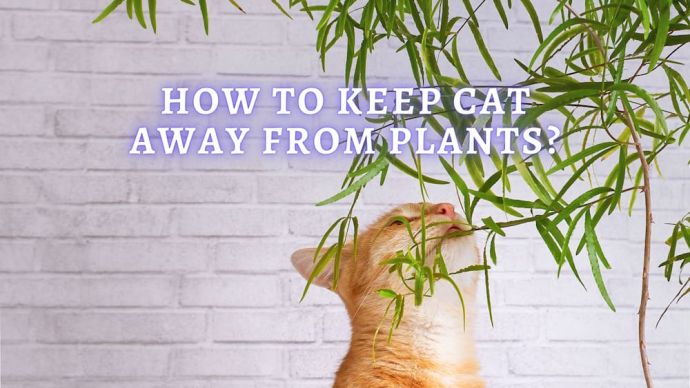 Cat Care How to Keep Cats out of Plants? How to Get Your Cat to Not Eat Plants?
Cat Care How to Keep Cats out of Plants? How to Get Your Cat to Not Eat Plants? - 420
- 0
 Cat Care Why Does My Cat Attack My Legs? 10 Reasons Why and What To Do About It (Vet-Approved Advice)
Cat Care Why Does My Cat Attack My Legs? 10 Reasons Why and What To Do About It (Vet-Approved Advice) - 46013
- 21
 Cat Veterinary Tips Cat Stomach Gurgling: Vet Advice on Why is Your Cat Stomach Gurgling?
Cat Veterinary Tips Cat Stomach Gurgling: Vet Advice on Why is Your Cat Stomach Gurgling? - 36469
- 4
 Cat Veterinary Tips My Cat Lost its Voice: Can Cats get Laryngitis? (Vet Advice)
Cat Veterinary Tips My Cat Lost its Voice: Can Cats get Laryngitis? (Vet Advice) - 23554
- 13









